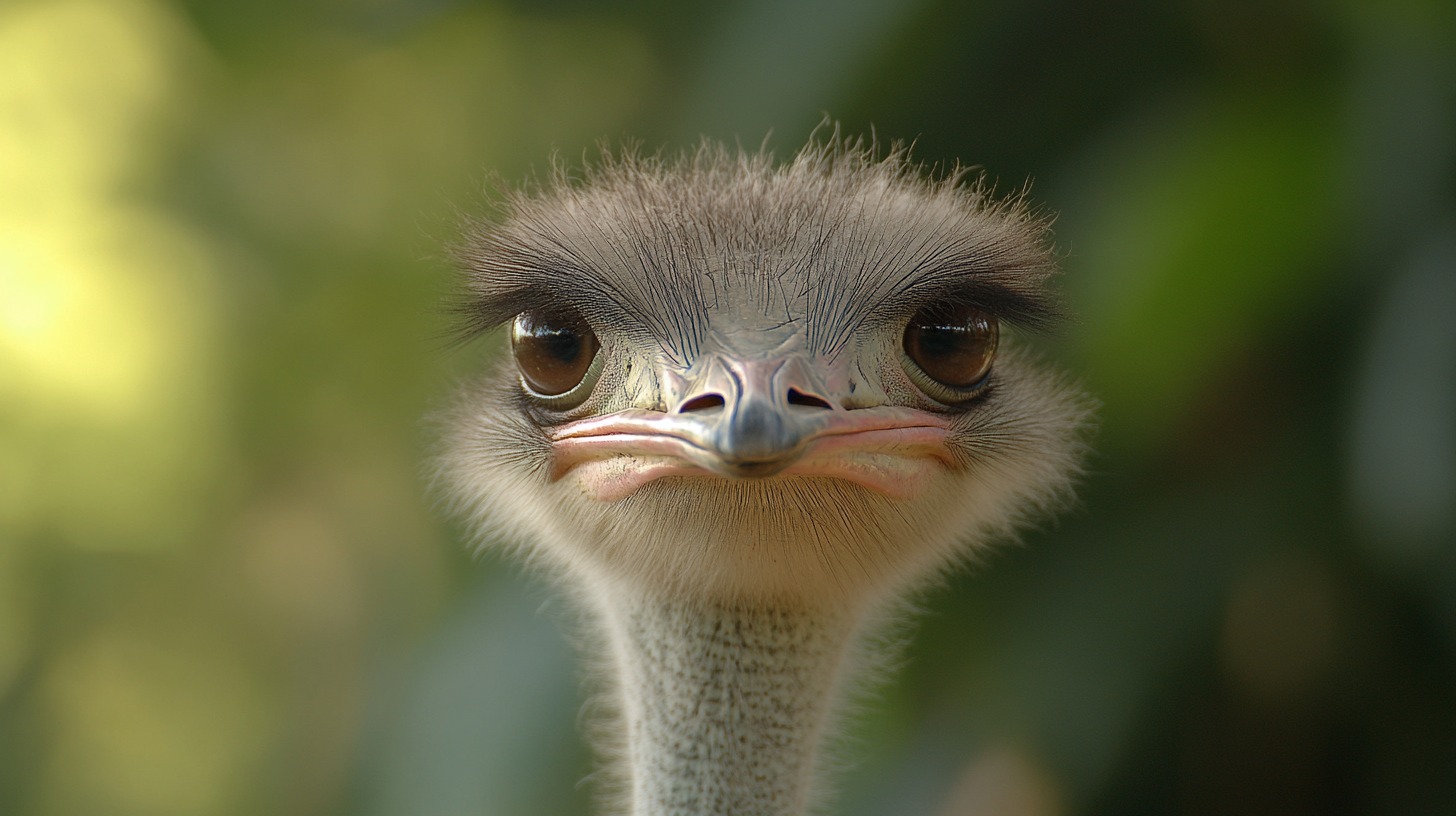
Share Post:
A heavy animal is usually big, but some large animals weigh less than you might expect.
For example, an ostrich, which can grow up to 7 feet tall, typically weighs between 198 and 286 pounds.
In comparison, a large male dromedary of the same height can weigh as much as 1,320 pounds.
This shows that an animal’s weight isn’t just about its size but also how it’s built.
Ostriches are probably lighter than they appear because their long leg bones, called femurs, are hollow, unlike the solid leg bones of camels.
An animal’s weight also depends on other factors, like how much fat or blubber it carries.
Table of Contents
Toggle10. Polar Bear
Unique Characteristic
Description
Scientific Name
Ursus maritimus
Lifespan
25 to 30 years
Swimming Speed
Can swim up to 6 miles per hour
Vision
Excellent night vision due to a reflective layer behind their retina
Walking Speed
Can walk up to 3.4 miles per hour
Hibernation Type
Pregnant females hibernate; males and non-pregnant females remain active
The polar bear, an immense and striking creature, is well-suited to its icy northern habitat. It boasts a double layer of fur—a combination of transparent guard hairs that appear white and a hefty layer of black skin underneath. Adding to its insulation, there is a thick layer of fat measuring four inches.
With large, furry feet, the polar bear can disperse its weight over thin ice and navigate icy waters efficiently according to Polar Bears International. Its strong, sharp teeth are ideal for hunting seals, its primary food source.
A large male polar bear can tip the scales at about 1760 pounds, with the largest recorded specimen weighing over a ton and standing 11 feet tall. However, due to climate change, the shrinking polar ice in the Arctic Sea threatens its habitat, leading to its vulnerable conservation status.
9. Bovini (Gaur, Bison, Buffalo)
Unique Characteristic
Description
Social Structure
Live in herds ranging from small family groups to massive herds of hundreds
Habitat Preference
Gaur prefers forests; Bison prefer plains and grasslands
Horn Shape
Gaur: upward-curved horns; Bison: short, curved horns; Buffalo: longer, flat
Bison Winter Coat
Grows thick fur in winter for insulation
Lifespan
15 to 20 years
Adaptability
American bison can survive extreme temperatures from -40°F to 100°F
The Bovini tribe features some of the heaviest cattle species globally.
The gaur, native to southern and southeast Asia, stands out as the largest, with bulls weighing up to 1.65 tons as per source. The American bison follows closely, reaching up to 1.4 tons.
The European bison, also known as the wisent, is slightly lighter at 1.1 tons. Among buffalo, the savannah-type African buffalo reaches 1.1 tons, contrasting with the smaller forest buffalo, which averages about half a ton.
8. Saltwater Crocodile
| Unique Characteristic | Description |
|---|---|
| Scientific Name | Crocodylus porosus |
| Lifespan | Can live up to 70 years |
| Jaw Strength | The strongest bite force of any living animal, exceeding 3,700 pounds per square inch |
| Communication | Uses vocalizations such as growls, roars, and hisses to communicate |
| Nesting | Females create nests from vegetation, which generates heat during decomposition to incubate eggs |
| Breeding Behavior | Females lay 40–60 eggs per clutch |
The saltwater crocodile holds the title of the largest living reptile.
Weighing up to 1.45 tons, it surpasses even the Nile crocodile. It preys on a wide range of creatures, including emus, monkeys, bats, birds, goats, deer, orangutans, kangaroos, and water buffalos. Humans are also on its menu if the opportunity arises according to Oceana.
Remarkably adaptable, this crocodile can handle tough prey like poison toads and porcupines. Living mainly in salt or brackish waters along the coastlines of Southeast Asia and Oceania, it has also been known to consume sharks.
Facts in Brief
- Highest Weight: 1.45 tons
- Diet: Emus, monkeys, bats, birds, goats, deer, orangutans, kangaroos, water buffalos, humans, sharks
- Habitat: Salt or brackish water along Southeast Asia and Oceania coasts
7. Giraffe
Unique Characteristic
Description
Scientific Name
Giraffa camelopardalis
Heart Weight
Giraffe hearts can weigh up to 25 pounds to pump blood through their long neck
Neck Vertebrae
Giraffes have seven elongated neck vertebrae
Tongue Length
Their tongues can reach up to 20 inches
Running Speed
Can run up to 35 miles per hour over short distances
Group Name
A group of giraffes is called a “tower”
Giraffes, known for their remarkable height, can reach up to 18 feet.
This feature allows them to access foliage in the tall trees of sub-Saharan Africa’s dry savannas and acacia stands. Their long, flexible tongues enable them to grab thorny branches, and they use their teeth to snip these branches off according to Giraffe conservation.
Primarily feeding during the day, giraffes consume and chew cud when not drinking.
Drinking requires a complex maneuver where they splay their front legs and bend their necks, all while managing their high blood pressure to prevent brain hemorrhaging. This physiology supports their large bodies, with some giraffes weighing up to 2 tons.
6. Elephant Seal
Unique Characteristic
Description
Scientific Name
Mirounga
Migration Distance
Can migrate over 13,000 miles annually
Deepest Dive Depth
Can dive as deep as 5,100 feet
Breathing Capacity
Can hold their breath for up to two hours underwater
Sexual Dimorphism
Males are up to four times larger than females
Pup Survival Rate
Only about 50% of elephant seal pups survive their first year
The elephant seal gets its name from the male’s nose, which inflates during the breeding season and amplifies its roaring calls.
This species is also recognized for its imposing size. A dominant male elephant seal can weigh up to 4 tons and measure 20 feet in length, significantly larger than the females.
During the two-month-long mating season, males engage in fierce battles on the beach, often resulting in injury. The victorious male, known as the beach master, controls a harem of up to 100 females.
Once the pups are weaned, adult elephant seals return to the ocean where they spend most of the year.
Their diet includes squid, skates, and small sharks, requiring them to dive to depths of 3281 feet and hold their breath for an average of 20 minutes.
It’s noteworthy that during their time ashore for breeding or molting, they do not eat. This makes their time at sea particularly crucial, as they hunt incessantly to maintain their energy levels.
5. Hippopotamus
Unique Characteristic
Description
Scientific Name
Hippopotamus amphibius
Skin Secretions
Secretes a natural sunscreen known as “blood sweat” to protect skin from UV rays
Running Speed
Despite their size, hippos can run up to 19 miles per hour on land
Breathing Behavior
Can hold their breath underwater for up to five minutes
Mating Season
Usually occurs in water
Dental Structure
Incisors can grow to be 1.2 feet long
The hippopotamus, with its hefty build, can weigh up to 4.5 tons as per MSN.
Despite its seemingly placid nature, it is one of the most perilous animals on the planet, thanks to its sheer mass and powerful jaws.
These formidable creatures have been known to topple boats and are not shy about using their force against perceived threats, including humans. The hippo’s aggressive tendencies contrast sharply with its herbivorous diet and social behavior.
Widely admired for its imposing presence, the hippopotamus thrives in both its natural habitat and captivity. Additionally, its meat is consumed, and its skin is utilized for leather production.
4. Rhinoceros
Unique Characteristic
Description
Horn Composition
Made of keratin, the same substance as human nails and hair
Communication
Rhinos communicate using honks, sneezes, and grunts
Poor Vision
Rhinos have poor eyesight but an excellent sense of smell
Social Behavior
White rhinos are more social, while black rhinos are solitary
Skin Thickness
Skin can be up to 2 inches thick
The members of the Rhinocerotidae family rank among some of the largest land animals. Comprising five distinct species, rhinoceroses inhabit both Africa and Asia. Notably, the white rhinoceros, found in Africa, can weigh up to 4.5 tons.
Interestingly, its color is not actually white; it is either brown or gray. The name “white rhinoceros” likely originated from a misinterpretation of the Dutch or Afrikaans term for its “wide” lips.
Another notable species is the Indian rhinoceros, weighing in at around 4 tons. This species features unique folds of skin over its rump, back, and shoulders, famously referenced in Rudyard Kipling’s “Just So Stories.” Although heavier than most, it is still lighter than the white rhinoceros.
Smaller yet still massive, the black rhinoceros weighs approximately 2.9 tons. This critically endangered species possesses a prehensile upper lip adapted for grasping foliage. Unfortunately, three of its subspecies have already become extinct.
Even more imperiled is the Javan rhinoceros, which used to inhabit a vast range across Asia. Now limited to Java, it weighs around 2.3 tons and faces extreme threats to its survival. Their dwindling numbers and shrinking habitat underscore the urgent need for conservation efforts.
3. Elephants
Unique Characteristic
Description
Brain Size
The largest brain of any land animal, weighing around 11 pounds
Trunk Usage
Capable of over 150,000 different muscular movements
Communication
Use infrasonic sounds that travel several miles
Memory Capacity
Known for their exceptional memory, can recall water sources and migration routes
Social Structure
Females live in matriarchal herds, while males are more solitary
Elephants hold the title of the largest land animals on Earth. Male African bush elephants can reach weights of 11.5 to 12.25 tons.
In contrast, the African forest elephant, which is smaller, can weigh around 6 tons. The Asian elephant generally weighs up to 8 tons.
They live in herds composed mainly of adult females and their young. Leadership roles in African elephant herds belong to the matriarch, whereas Asian elephant herds do not display as clear a hierarchical structure.
Notably, Asian elephants can be tamed for labor, while their African counterparts cannot undergo domestication. Both species face the threat of endangerment.
2. Plankton Feeding Sharks
Unique Characteristic
Description
Whale Shark Lifespan
Can live up to 70 years
Swimming Speed
Whale sharks swim at about 3 miles per hour
Basking Shark Gill Rakers
Have the longest gill rakers of any shark species, used for filter feeding
Size at Birth
Whale sharks are born at around 2 feet long
Shark Migration
Both species are known for long-distance migrations in search of food
Plankton-feeding sharks include the whale shark and the basking shark, two of the largest fish in the world.
The whale shark, the largest, can weigh up to 20 tons, while the basking shark, the second largest, can reach weights of around 18 tons.
Despite their enormous sizes, both species are harmless to humans since they feed primarily on plankton by opening their mouths and swimming through dense patches of these tiny organisms.
Whale sharks have a unique advantage—they can actively pump water through their gills to filter out plankton, tiny fish, and invertebrates. In contrast, basking sharks need to keep swimming forward to force water through their gills. This simple yet effective feeding method allows them to thrive in their aquatic environments.
1. Whales
| Unique Characteristic | Description |
|---|---|
| Blue Whale Heart Size | Can weigh as much as 1,300 pounds, about the size of a small car |
| Fin Whale Speed | Known as the “greyhounds of the sea” for their ability to swim up to 25 miles per hour |
| Humpback Whale Songs | Male humpback whales produce complex songs that can last for hours |
| Whale Breathing Behavior | Can spout water up to 30 feet into the air |
| Right Whale Feeding Style | Skim-feeds at the surface, unlike many other baleen whales that lunge-feed |
Whales are some of the most massive creatures ever to exist. Among the top ten heaviest animals on Earth, all are whales. These incredible mammals, which once roamed land, migrated back to the oceans millions of years ago.
The majority are baleen whales, characterized by their unique keratin-based filters instead of teeth. These filters enable them to strain small prey like krill from the water.
List of Heaviest Whales
- Blue Whale – Up to 219 tons, the largest and heaviest of them all.
- Fin Whale – Approximately 120 tons.
- Bowhead Whale – Around 120 tons.
- Northern Pacific Right Whale – Roughly 120 tons.
- North Atlantic Right Whale – About 110 tons.
- Southern Right Whale – Weighing around 110 tons.
- Sperm Whale – Notable for its distinct teeth, weighs around 57 tons.
- Humpback Whale – Approximately 48 tons.
- Gray Whale – Around 45 tons.
- Sei Whale – Weighing close to 45 tons.
These magnificent animals display a variety of adaptations for marine life, with baleen whales using their specialized filters to effectively consume enormous amounts of tiny prey. The blue whale, in particular, stands out not only for its immense size but also for its incredible weight, making it the true giant of the oceans.
Whales hold the record among mammals for longevity. The Bowhead whale, in particular, can live for over 200 years. This extraordinary lifespan is attributed to its arctic habitat and its uniquely slow metabolism. During deep dives, the Bowhead’s heartbeat can slow down to just 2 beats per minute. This adaptation helps them conserve energy and survive in extreme environments.




















